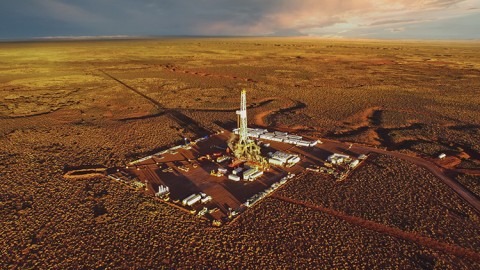To begin with, data has grown in popularity because it influences decisions in a variety of industries, giving companies the ability to learn and improve operations. Data creation has increased dramatically in the age of digital transformation, driven by the growth of big data and online interactions. Advanced data analytics tools have emerged as a result of this exponential expansion, giving businesses the ability to use data to gain a competitive edge.
General Overview
Firstly, when it comes to using data analytics to improve exploration, production, and operational efficiency, the oil and gas sector is leading the way. Businesses may enhance resource management, optimize drilling procedures, and forecast equipment breakdowns by applying advanced data analysis techniques. One example of how companies might use big data analytics to revolutionize their operations is the oil and gas sector. Data analytics will only become more important as companies continue to embrace digital transformation, spurring efficiency and innovation in various fields.
Because COVID-19 made it easier for academics and engineers to analyze data remotely, there was a greater need for big data analytics in oil and gas operations. Big data has become a crucial component of data analysis, which will be a major driver for the business. Data recording sensors are a recent addition to the sector for a variety of activities, including exploration, drilling, production, refining, and transportation. Big data also improves production, operations, asset management, and workplace safety. Big data analytics still faces difficulties, though, mostly because of a lack of business support and technological knowledge. One of the main obstacles to big data in the oil and gas exploration and production industry is comprehension of the complexity of the issue.
Behind the Scenes
To enable constant data collection and real-time asset and environmental condition monitoring, oil and gas corporations deploy hundreds of sensors in surface facilities and underground wells. Sensors, GPS and geographical coordinates, meteorological services, seismic data, and other measuring equipment are the sources of the data volume.
Surveying, processing, imaging, exploration planning, reservoir modeling, production, and other upstream operations are all managed with structured data using specialized programs. E-mails, word processing documents, spreadsheets, photographs, voice recordings, multimedia, and data market feeds are examples of unstructured or semi-structured data, which makes it difficult or expensive to store in conventional data warehouses or to regularly access and analyze. In this situation, the right Big Data techniques ought to be applied. As suggested by a data scientist, “[the oil and gas field] has an uncertain cycle of productivity, so having a uniform process of compiling data and processing allows for less downtime and more operational efficiency with less jobs cost along the way.”
With that, it is important to note that oil and gas businesses can now make data-driven choices, cut expenses, and increase production thanks to the use of machine learning algorithms and sophisticated analytics. Another development that addresses increasing worries about the confidentiality and security of data is the usage of blockchain systems to safeguard large data. Predictive maintenance and downtime reduction are made possible by the growing popularity of integrating IoT sensors with real-time data processing. The high cost of putting big data solutions into practice, along with issues like data integration and compatibility, continue to be barriers to industry expansion.
In conclusion, since it offers insights to handle the intricate nature of petroleum engineering challenges, big data analytics is transforming the oil and gas industry. Huge quantities of data are produced by the industry from a variety of sources, such as drilling activities, petrochemical management of assets, logistics and shipping, and data recording devices. Nevertheless, data management is complicated by the varied nature and accuracy of the data. Managing organized, semi-structured, and unstructured data is made possible by technological advancements in data processing, data analysis, and data transfer technologies. For cutting-edge technologies like reservoir modeling, hydraulic fracturing, machine learning, artificial intelligence, data mining, increased recuperation of oil, and industrial engineering, petroleum engineers and geoscientists will continue to enhance efficiency in the production and exploration stages by using big data tools.








